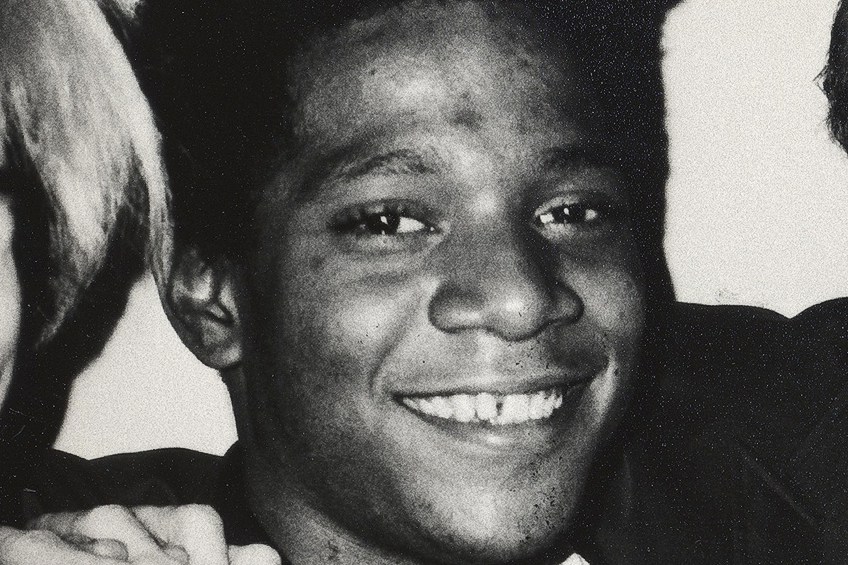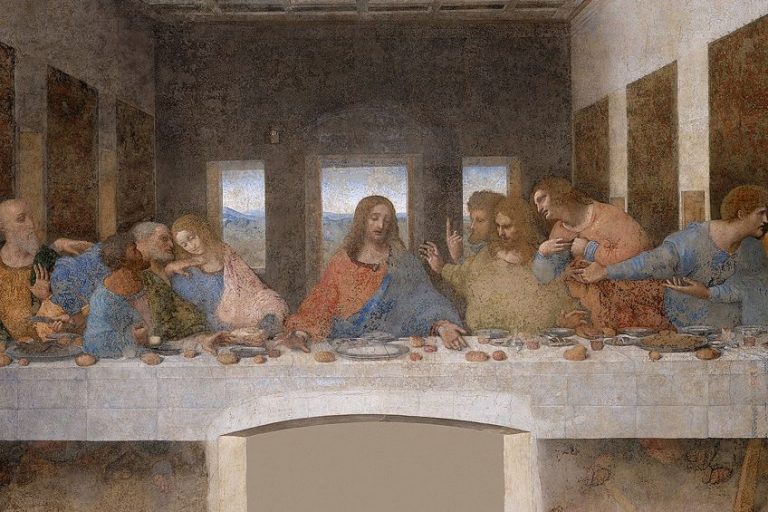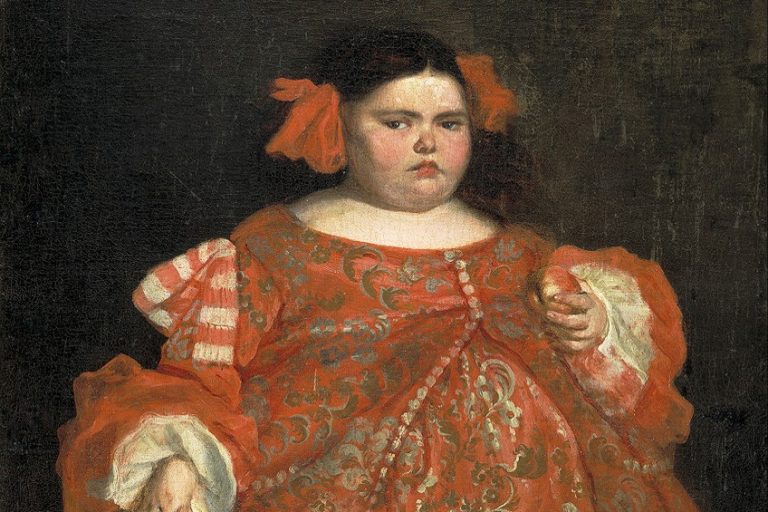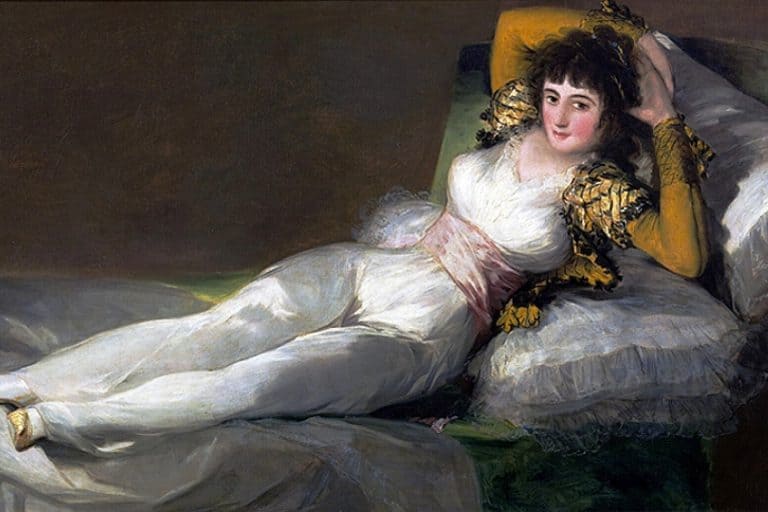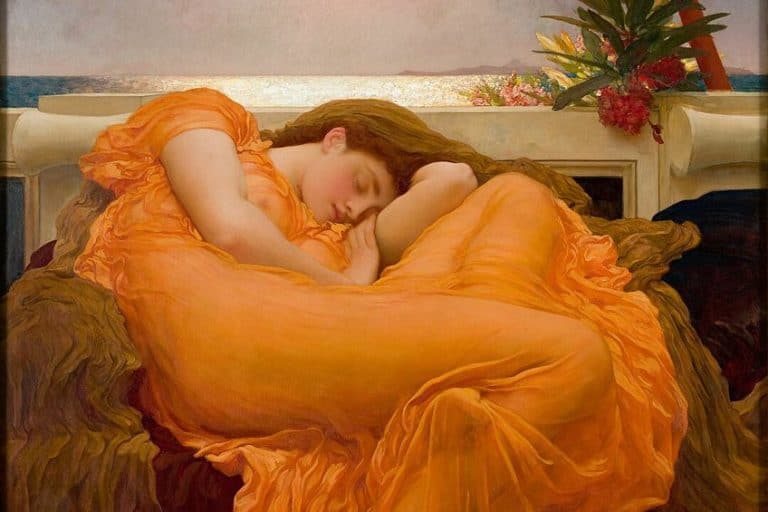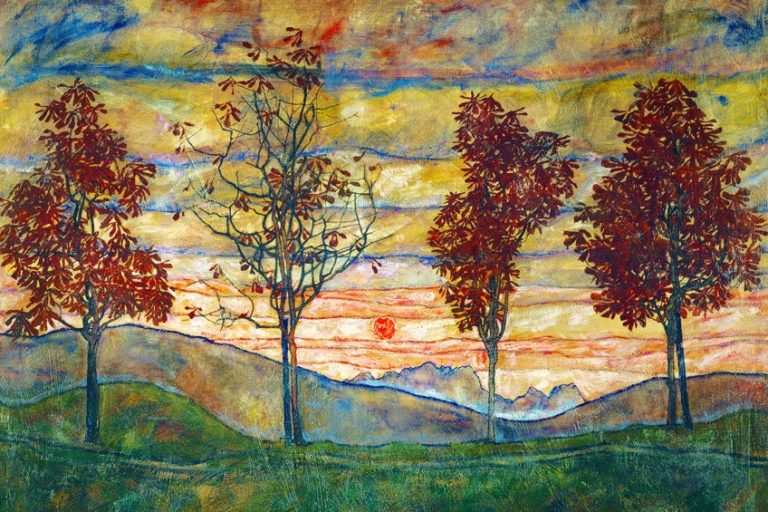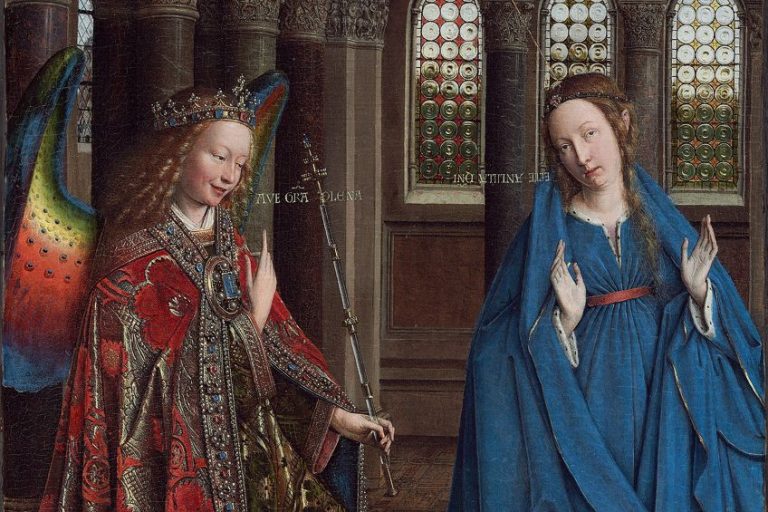Famous Basquiat Paintings – Looking at the Best of Basquiat’s Art
Jean-Michel Basquiat was a well-known Neo-Expressionist during the 1980s. He made his artistic stamp on the walls of New York City and eventually exhibitions in popular museums and art galleries. Basquiat’s art has sold for millions of dollars and in his short life, he made a movement and a language through his unique artistic style – moving millions of people. Below we discuss 10 famous Basquiat paintings and the meaning waiting underneath each one.
Table of Contents
Who Was Jean-Michel Basquiat?
Jean-Michel Basquiat was an American artist, born in 1960 in Brooklyn, New York City. He had three siblings. His father was from Port-au-Prince in Haiti, and his mother was from a family with Puerto Rican lineage. Since he was 11 years old, he could speak and read in English, French, and Spanish and was artistically inclined from a young age, including being a Junior Member of the Brooklyn Museum.
He was hit by a car in 1968, so his mom bought him the “Gray’s Anatomy” (1858) publication, the illustrations of which played a large part in his art subject matter.
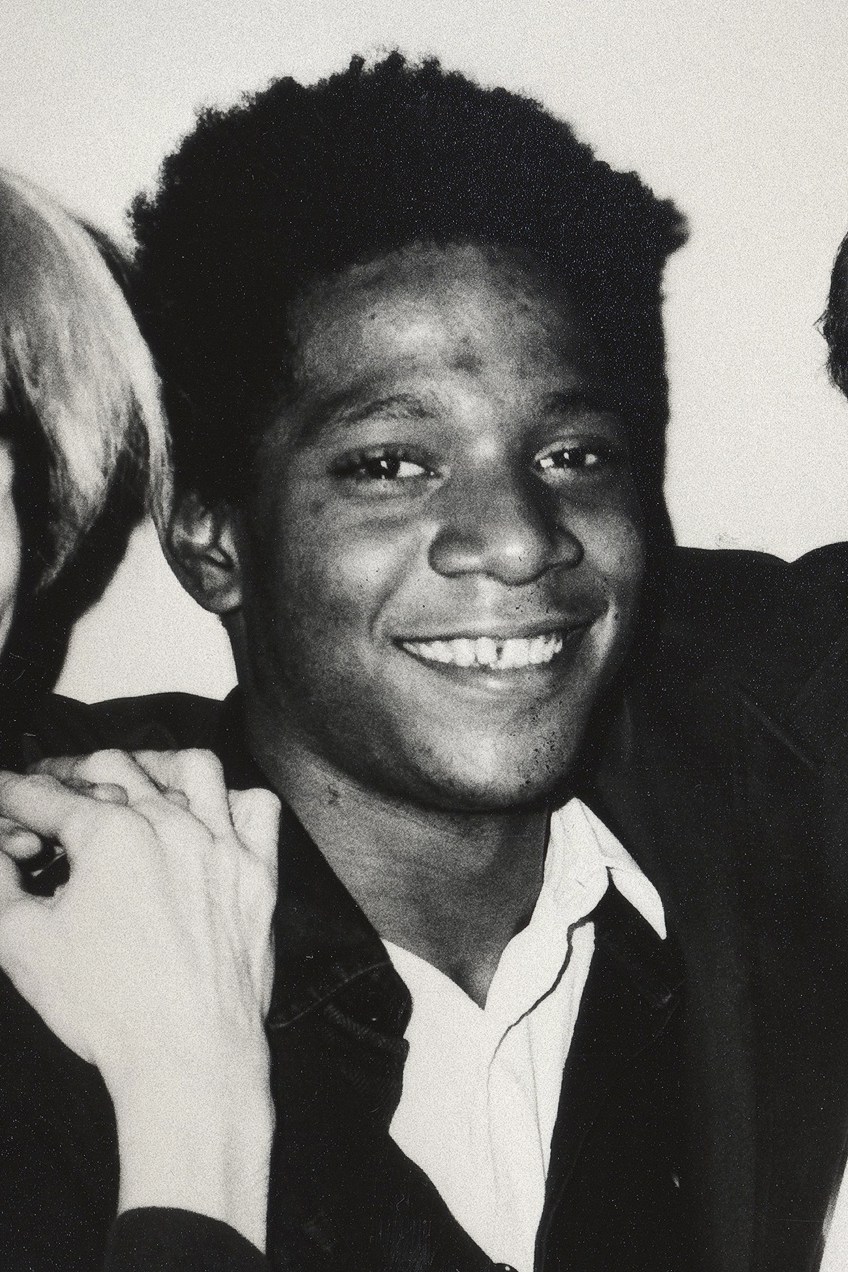
He collaborated with Al Diaz in 1978 and started spray-painting buildings under the artistic name SAMO (Same Old Shit). After SAMO, he exhibited in various art shows and has been written about in magazine articles. Due to his drug addiction, he died of a heroin overdose when he was 27 years old.
Top 10 Famous Basquiat Paintings
Before we start with our list of the top 10 famous Basquiat graffiti art paintings, let us set some context. The Jean-Michel Basquiat artwork collection might appear quite juvenile in its depiction when you first look at it, but as many sources say, there is tremendous depth and forethought in each scribble and line made by him.
He may have been one of the most successful young artists of the 20th century, but his work was imbued with the spirit of a young man beyond his years.
Basquiat painted in different media, for example, oil paints, acrylics, spray paints, among many others. He painted on different surfaces like canvas, linen, wood, and let us not forget his roots: spray-painting buildings under the name SAMO. He created around 600 paintings and over 1000 drawings.

The essence in each of the works of Basquiat art also lies in his utilization of words, various letters, codes, numbers, and other symbols all intermingled with his images. These were a large part of what made his work so unique. He was not only a painter but a poetical maestro.
Basquiat also used his compositions to draw attention to pertinent socio-political issues and various “dichotomies”, for example, rich and poor or wealth and poverty, inner and outer, and many others. He also touched on various racial aspects and stereotypes as we will see in some of his paintings below.
What we will also notice in the famous Basquiat paintings is that he highlights important black figures from history, typically heroes and saints, venerated by their depiction of halos and/or crowns.
Another prominent theme we will see in the famous Basquiat graffiti art collection is his focus on anatomy, no doubt influenced by the book his mother gifted him, Gray’s Anatomy. He painted a collection of heads and skulls. Basquiat sutured his interests in anatomy and his Neo-Expressionist style with his skilled hand at mixed media. But Basquiat’s heads reveal a deeper aspect of his paintings – that of culture and heritage; some sources suggest his heads resemble African masks.
Irony of a Negro Policeman (1981)
| Title | Irony of a Negro Policeman |
| Date Painted | 1981 |
| Medium | Acrylic and oil stick on wood |
| Dimensions | 122 x 183 centimeters |
| Where It Is Currently Housed | Private Collection |
| Price | Sold for $12.6 million at Philips Contemporary Art auction (2012) |
In Irony of a Negro Policeman (1981) we see a black figure depicted as a policeman. The blockish figure, with broad shoulders, and an unnaturally elongated torso. His left hand (our right) seems disjointed and not connected to his body. He is also wearing a top hat in blue and red colors. His face appears with various scribbles making his nose, mouth, and eyes, which give him a harsh appearance.
To the right side, there are words written in black in a childlike script, the top part reads “IRONY” in an air bubble, and below it is “IRONY OF A NEGRO PLCEMN”. Further down this part, we see red letters forming the words “PA” and then “PAWN”.
The inclusion of the word “Pawn” tells us exactly what Basquiat intended to convey about this painting; in fact, the entire composition being a black male as a policeman alludes to us what the artist is touching on.
Basquiat uses this painting to comment on the fact an African American is siding with the exact same white authoritarian regime, the Police Force, that tries to control and overpower them. The white man in a role of domination is how the artists saw it.
Various questions are raised from this piece, for example, why is the African American in this role? Basquiat also, mockingly, depicts his own culture as being foolish for being in this role, and ultimately being a “Pawn” in the role of what seems to be a false sense of power.
Other scholars have also noted the use of Basquiat’s word, “Plcemn”, which could have a double meaning, suggesting the policeman here is merely a “Placement” and not a “real” policeman. A “placement” within an authoritarian system that only views him, as some sources suggest, as a “puppet” and “an animal”.
Other aspects of this work point to references from Basquiat’s cultural heritage, for example, the top hat is possibly a reference to the Haitian Vodou spirits, or Ioa, Baron Samedi who wore a top hat along with a black coat and other accouterments. He is usually depicted as a black figure with a skull as facial features – a noticeable resemblance in Basquiat’s figure here.
Pork Sans (1981)
| Title | Pork Sans |
| Date Painted | 1981 |
| Medium | Acrylic, oil, oil stick on glass and wooden door |
| Dimensions | 85.5 x 211 centimeters |
| Where It Is Currently Housed | Private Collection |
| Price | $6.8 million (2016) |
The Pork Sans (1981) painting is made on a wood and glass door. Here we see Basquiat’s characteristic scribbles of abstract paint and words, albeit with inherent meaning and purpose. The top part of the door has six panels of windows all painted in blues, grays, and whites.
The top left panel shows what appears to be a circle divided into eight slices with one colored in dark gray. The panel next to this depicts a face and most of the other panels have letters written on it like a consecutive sequence of “R” and then “TAR”.
When we look at the lower part of this door, we see a black face with thick lines and scribbles making its facial features.
Its mouth is depicted as a rectangular shape with lines throughout denoting teeth and its eyes are circles with two borders and intersecting lines in-between. In the center we notice small red dots making the pupils.
Above the figure’s head is a thick floating circle with intersecting lines, it almost appears like a halo over the figure’s head. Basquiat primarily uses black here and the head of the figure appears to be in turmoil, which is a theme the artist reportedly sought to convey.
We see more letters in the lower part of the door, one being “PORK” in the top right corner and various other letters like “H” also repeated. Basquiat’s use of letters and words needs to be visually appreciated, and ironically, any attempts to describe it in words will not do it justice.
Pork Sans was purchased by the actor Johnny Depp in 1998 at the Christie’s auction and has been quoted in the book Jean-Michel Basquiat (2000) by the recently passed author Enrico Navarra. In it, he stated that Basquiat’s work, including Pork Sans, is not suited to everyone’s tastes:
“You either get it, or you don’t. One either loves with a passion or despises with a vengeance”.
Untitled Skull (1981)
| Title | Untitled |
| Date Painted | 1981 |
| Medium | Acrylic and oil stick on canvas |
| Dimensions | 205.74 x 175.9 centimeters |
| Where It Is Currently Housed | The Broad Museum, Los Angeles |
| Price | Not available |
Untitled (Skull) is another popular Basquiat art depicting one of his famous heads. It has always been titled “Untitled” also named “Skull” as there are several untitled pieces by the artist. This is also one of the artist’s earlier works, created when he was 20 / 21 years old. He displayed it in 1982 as part of his debut solo exhibition at the Annina Nosei Gallery in New York City.
The painting is of a head, although its allusion to a skull most likely originates from its resemblance to it as we see the inside of the head too, especially around the mouth and jaw area. The head is often described as created in “patchwork” with a background that appears like a map, some suggest the New York City subway map.
We see the “Skull” as a combination of the inner and outer anatomical aspects of a head, but this alludes to the theme situated around the inner and outer.
Additionally, we also see the theme of death versus life, the inside of the skull denotes death and the outside life, as we see with the hairs on the head shown as protruding little lines and the skin around the eyes.
This head, which could possibly be a Jean-Michel Basquiat portrait, appears subdued and sad, its eyes are focused on a downward gaze that suggests deeper emotions of being upset or possibly tired from some hardship. The mouth is also turned downwards with a clenched jaw.
This head has also been considered a symbol of African masks and African identity.
It also looks like it combines these aspects with the depictions of human anatomy. It is a visual representation of the artist’s exploration of deeper, internal, processes, quite literally portrayed here. With the use of various bright colors, the work also appears ironically upbeat, but with an air of morbidity.
La Hara (1981)
| Title | La Hara |
| Date Painted | 1981 |
| Medium | Acrylic and oil stick on wood panel |
| Dimensions | 180 x 121.3 centimeters |
| Where It Is Currently Housed | Private Collection |
| Price | Sold for $35 million at Christie’s auction (2017) |
In La Hara (1981) we see another police officer, however, here he is portrayed as a white male. Basquiat also played with the meaning of the words “La Hara” which is a version of the slang word la jara, meaning police. The slang originates from the language utilized by Puerto Ricans who lived in New York, this was referred to as Nuyorican. The “Hara” part comes from the common Irish surname “O’Hara”, which was reportedly a surname of numerous police officers during the 1900s.
In this painting, we see a colorful figure of a policeman, his blue hat with a yellow peak is large on his head and his body appears skeletal; he has broad shoulders. He is standing in front of gray bars, which appear proportionately smaller than his larger, looming, figure.
Basquiat undoubtedly emphasizes his mixed emotions towards law enforcement, as well as various cultural and racial stereotypes, in this painting.
His facial features also resemble those of a skeleton. He has glaring red eyes, his right pupil (our left) is painted blue, and his left pupil (our right) is painted in red too with a blue outline. We see this play on lines throughout Basquiat’s paintings. In La Hara, we will notice it loosely delineates the figure and all the surroundings, for example, his police hat, which has a seeming blue halo around it, and slightly underneath this outlines we see a white one moving down the figure’s neck and evening out into a straight line above his shoulders.
Behind the policeman’s right shoulder (our left) we see a sort of logo or emblem of an eagle with splayed wings and the words below it, repeated in four lines, “LA HARA”; the second line has four question marks next to it, one in front and three after. What do the question marks mean? Is this Basquiat ultimately questioning authority? We will see behind the policeman’s left shoulder (our right) there is an image of a thermos with the accompanying words “THERMOS”.
Untitled (Boxer) (1982)
| Title | Untitled (Boxer) |
| Date Painted | 1982 |
| Medium | Acrylic and oil paintstick on linen |
| Dimensions | 193 x 239 centimeters |
| Where It Is Currently Housed | Private Collection |
| Price | $13.5 million (2008) |
In Untitled (Boxer) (1982) we see a black figure with arms raised in victory, each hand wearing a black boxing glove. The figure takes up most of the composition and there are no other identifiable objects surrounding him or behind him except Basquiat’s characteristic lines and scribbles.
Additionally, any identifiable objects we can make out are painted within the figure’s torso, but these are borderline, if not completely, abstract. We see white lines delineating the boxer’s stomach muscles.
The figure’s facial features are also quite jarring in appearance, his mouth appears like he has a cage-like structure over it or as it. His eyes are large and circular and over his head, we see the characteristic halo-like circle drawn in a black outline.
This painting shows us another theme that was important to Basquiat, which was portraying heroic-like African figures, in this case, boxers. Some of the well-known boxers he admired included Muhammad Ali and Joe Louis. This was also something significant in the artist’s life because the idea of the boxer symbolizes strength and overcoming struggle, something the artist identified within his own life.
Untitled (Skull) (1982)
| Title | Untitled (Skull) |
| Date Painted | 1982 |
| Medium | Acrylic, spray paint, and oil stick on canvas |
| Dimensions | 183.2 x 173 centimeters |
| Where It Is Currently Housed | Private Collection of a Japanese collector, Yusaku Maezawa |
| Price | Sold for $110.5 million at Sotheby’s auction (2017) |
Untitled (Skull) (1982) is another Jean-Michel Basquiat portrait painting, so to say, although these are not your conventional portrait paintings. In this composition, we see a skull with thick black outlines and whites, blues, yellows, and reds showing through. His mouth is in a square shape giving him an even more jarring and skeletal appearance.
The background color is light blue with various other colors scattered around it, as well as notably thicker sections of white.
Above his head, we see “X”, “O”, and “S” shapes written in white block-like structures. In the bottom left we see what appears to be in thick black the letters “A” and “a”, in uppercase and lowercase, and an odd “I” next to it.
The “A” letters are scribbled over in black as if the artist decided these did not belong there, however, was this the case?
This has been one of the highest-paid for Basquiat paintings and was eventually bought by the Japanese collector, Yusaku Maezawa, who took the painting to various art museums for exhibition, namely, the Seattle Art Museum and the Brooklyn Museum.
Dustheads (1982)
| Title | Dustheads |
| Date Painted | 1982 |
| Medium | Acrylic, oil stick, spray enamel, and metallic paint on canvas |
| Dimensions | 180 x 210 centimeters |
| Where It Is Currently Housed | Private Collection |
| Price | Sold for $48.8 million at Christie’s auction (2013) |
In Dustheads (1982) we see two figures that appear in a happier state than some of the figures we have noticed in his paintings. The figures are multi-colored with a black background, which emphasizes their colors even more.
The left figure has an elongated vertical yellow head and a body made of thicker white-gray lines with a geometric right hand (our left) appearing to reach out to us. His left hand (our right) is very long and reaches far out to his left side towards a thick white upside-down “T” structure in the center of the composition, which also creates a barrier of sorts between both figures.
The right figure has an identifiable anthropomorphic body compared to the more geometric body of the figure to the left.
His whole body appears red, including his hands with rather pointy-like fingers. His facial features resemble that of a monkey’s face, he has large circular spiral eyes and a large, grimaced mouth that gives the impression of laughter or joy. Both his arms are raised upwards. The figure to the left has similar spiraled eyes.
Furthermore, these figures are almost reminiscent of African tribal figurines and masks. If we look closely, we will notice the facial features of each figure appears to have a superimposed face, almost like a mask, on each. Could Basquiat have done this intentionally referring to African masks?
From what we can denote from the title, Dustheads, the painting can also refer to drug addicts, a world that the artist was involved with during his life. We can surmise the happy ambiance from this painting is due to the two figures in a high state and their eyes add to the hallucinogenic effects they are undoubtedly experiencing.
Flexible (1982)
| Title | Flexible |
| Date Painted | 1982 |
| Medium | Acrylic and oil stick on wood |
| Dimensions | 259.1 x 190.5 centimeters |
| Where It Is Currently Housed | Private Collection |
| Price | Sold for $45.3 million at Phillips auction (2018) |
In Flexible (1982) Basquiat painted what is referred to as a griot, which in West African culture refers to someone who holds the capabilities to relay oral traditions, either through music, poetry, storytelling, or other forms.
Here we see a Basquiat iconic black figure with both arms raised upwards, but uniquely joining together as one circular formation creating a large halo-like structure around the figure, but other descriptions state this could symbolize more of a “spiritualized” energy field. The figure’s body has been described as “emaciated” and his limbs are thin.
We see the external-internal theme, including the artist’s interest in anatomy, played out here with the depiction of the figure’s trachea, lungs, breastbone, and stomach area visibly drawn.
The figure’s face is primarily highlighted by yellow outlines around his oval-shaped eyes, which extend to around his nose, the side of his face, and along his jawline. His lips are highlighted in a thick red color with sparsely spaced teeth. There is a darker red outline that reaches around the figure from just above his head to almost below his lungs intersecting just by his shoulder area.
Fred Hoffman, an art historian, has stated this could be resembling a tribal king because of the posture of raised and connecting arms, which symbolizes and “conveys confidence and authority, attributes of his heroism. He seems to be crowning himself”.
Furthermore, the fact that this could also be a griot is symbolic of Basquiat’s place within the art world, maybe the artist felt he shared similar qualities to that of a griot?
It is also interesting to note the material this painting is created on, which is on the white pickets placed together from a fence that surrounded Basquiat’s studio in Los Angeles. We can immediately understand the symbolism from removing this fencing structure and creating art on it. Basquiat physically removed the boundaries around himself and the idea of access, which can also point to when he was homeless and had no physical home and boundaries to protect or surround him.
In Italian (1983)
| Title | In Italian |
| Date Painted | 1983 |
| Medium | Acrylic and oil stick on canvas |
| Dimensions | 224.8 x 203.2 centimeters |
| Where It Is Currently Housed | The Brant Foundation |
| Price | Not available |
In Italian (1983) is filled with visual motifs and symbols that make Basquiat art what it is. We see a figure to the lower right with the word “SANGRE” across his chest area. The artist was believed to change the Italian word for blood, which is sangue, to the Latin word for blood, which is sangre.
We will notice various other words around the painting, for example, “LIBERTY”, “TEETH”, “TEN CENT”, “CORPUS”, “BLOOD”.
There are also numbers scattered around the painting, these appear to be years. For example, in the top left corner, there appears to be a coin that says, “IN GOD WE TRUST” with the word “LIBERTY” with a line through it, the year “1951” is also depicted.
Near the middle left of the composition, we see the words “DIAGRAM OF THE HEART PUMPING BLOOD”. This can also be another reference to his interest in anatomy after his mother bought him the book Gray’s Anatomy when he was hospitalized due to an accident in his younger years.
Riding with Death (1988)
| Title | Riding with Death |
| Date Painted | 1988 |
| Medium | Acrylic and crayon on canvas |
| Dimensions | 249 x 289.5 centimeters |
| Where It Is Currently Housed | Private Collection |
| Price | Not available |
Riding with Death (1988) was apparently one of Basquiat’s final paintings and a telling portrayal of not only the artist’s own demise but of the socio-political events that he witnessed related to racial divides and class struggles.
This work tells us a lot although it appears quite minimalistic, with the background compared to some of Joan Miró’s paintings and their backgrounds, for example, “Dog Barking at the Moon” (1926) and “Snail, Woman, Flower, Star” (1934).
In Basquiat’s Riding with Death, we see a brown background and the figure of a human in a darker shade of brown. He appears to be riding on a skeleton, which could possibly be a horse? All we see of this skeleton are his limbs and the body appears, ironically, almost like an invisible formation upon which the human figure sits, or more aptly, straddles.
The skeleton is facing us, the viewers, with circular eyes each marked with “X” shapes – some sources suggest these are infinity symbols. The human figure on the horse is abstract in portrayal, we are not sure if the figure is in full profile. The head and face are unidentifiable with a large part of it depicted as a black circular form, with a white oval shape in it and lighter brown squarish shape over this, the square appears with rounded corners. The figure’s leg closest to us is painted brown, but the leg straddling the far side of the skeletal horse is only a black outline of a leg.
This painting has been believed to be inspired by some of Leonardo da Vinci’s drawings; in fact, Basquiat was believed to have studied Renaissance art. Furthermore, the painting touches on primitive themes as well as Basquiat’s Afro-Caribbean heritage.
The painting could also symbolize the idea of riding towards death, the “horse” has been described as possibly being more dominant even though there is a rider atop him. There is a wealth of symbolism in this painting, and it is better understood when we look at Basquiat’s lineage and experiences as a young man.
Basquiat Rising, Falling, Never Forgotten
Basquiat came from almost nothing as an artist with fame finding him very early and quickly. His art sold for millions of dollars, and he was well-known and adored by various celebrities, having a close friendship with the Pop Artist Andy Warhol and a close relationship with musical pop star Madonna. He inspired many other artists after his death, including artists in the areas of film, music, and literature.
As a Neo-Expressionist artist, Basquiat constantly pushed at the edges of meaning, if not totally obliterating ideologies to reform completely new meanings and interpretations based on his own personal experiences, but ultimately pertinent questions about race, class, society, and culture. He was controversial and revolutionary and quite skilfully ironic. He is remembered as an artist who rose to fame and fell quite hard, but he is also someone who will never be forgotten.
Frequently Asked Questions
Who Was Basquiat?
Jean-Michel Basquiat was an American artist, born in 1960 in Brooklyn, New York City. He was famous for his graffiti art and as a Neo-Expressionist artist in America during the 1980s. Basquiat painted in different media, for example, oil paints, acrylics, and spray paints. He painted on different surfaces like canvas, linen, and wood. He created around 600 paintings and over 1000 drawings.
How Did Jean-Michel Basquiat Die?
When Jean-Michel Basquiat was 27 he died from a heroin overdose.
What Are the Characteristics of Jean-Michel Basquiat Artwork?
Basquiat’s art is characterized by his loose brushstrokes and geometric shapes that depict primarily abstract subject matter. He is characterized for utilizing various symbols, icons, and motifs, especially letters and numbers. Basquiat also drew attention to pertinent socio-political issues and various “dichotomies”, for example, rich and poor or wealth and poverty, inner and outer. He touched on various racial aspects and stereotypes.
Isabella studied at the University of Cape Town in South Africa and graduated with a Bachelor of Arts majoring in English Literature & Language and Psychology. Throughout her undergraduate years, she took Art History as an additional subject and absolutely loved it. Building on from her art history knowledge that began in high school, art has always been a particular area of fascination for her. From learning about artworks previously unknown to her, or sharpening her existing understanding of specific works, the ability to continue learning within this interesting sphere excites her greatly.
Her focal points of interest in art history encompass profiling specific artists and art movements, as it is these areas where she is able to really dig deep into the rich narrative of the art world. Additionally, she particularly enjoys exploring the different artistic styles of the 20th century, as well as the important impact that female artists have had on the development of art history.
Learn more about Isabella Meyer and the Art in Context Team.
Cite this Article
Isabella, Meyer, “Famous Basquiat Paintings – Looking at the Best of Basquiat’s Art.” Art in Context. January 6, 2022. URL: https://artincontext.org/famous-basquiat-paintings/
Meyer, I. (2022, 6 January). Famous Basquiat Paintings – Looking at the Best of Basquiat’s Art. Art in Context. https://artincontext.org/famous-basquiat-paintings/
Meyer, Isabella. “Famous Basquiat Paintings – Looking at the Best of Basquiat’s Art.” Art in Context, January 6, 2022. https://artincontext.org/famous-basquiat-paintings/.


